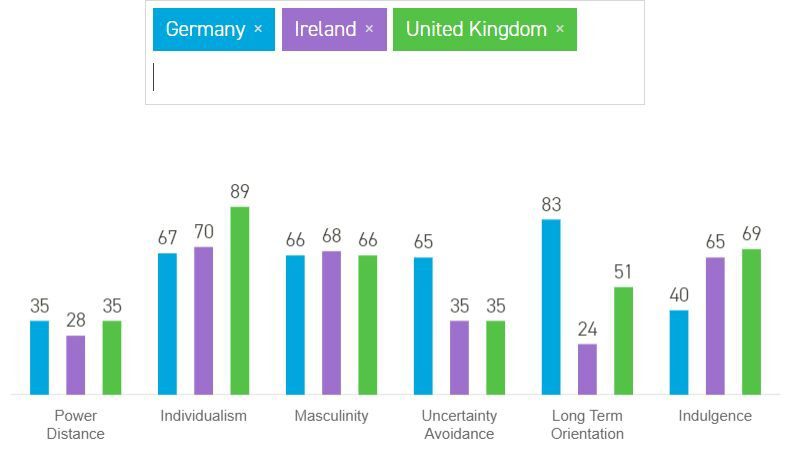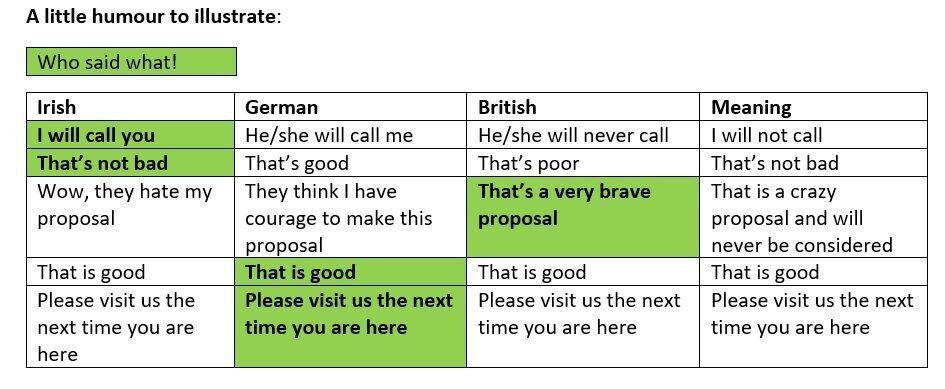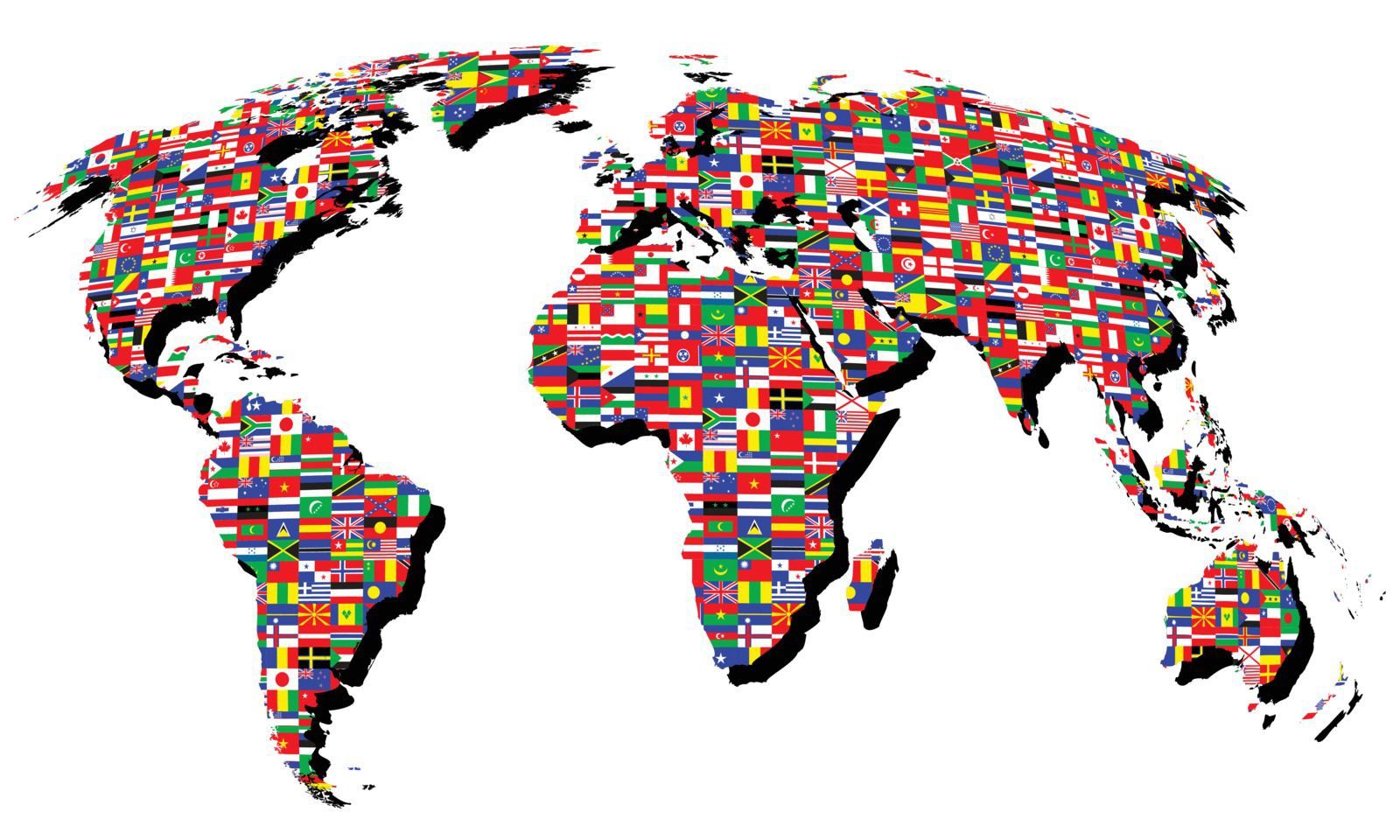Many of us now work in diverse teams, we work in intercultural environments and across many borders. We communicate face to face, online with and without visual feedback, via email, and with myriad online messaging tools.
This can be challenging. It can be confusing. There can be many misunderstandings, and even conflict at times due to how we perceive a situation or understand a communication. We all see the world as we are, and not how others see it.
Intercultural Coaching gives your business the edge
As an example; maybe you have seen one of those emails in your workplace, the one that was cascaded from somewhere near the apex of the organization? Did you ever read the full email thread, bottom to top? It starts with someone, writing something important in their first or second language, from the country office where they work. It passes through layers of management and other country offices and sometimes has additional, simple, text such as: “Please cascade”. Other times, it has the summary of the original message as it is interpreted by the next person in line. They then cascade the message where it is again summarised and cascaded. I have noted, that on occasion, the final recipient receives a message in complete contradiction to the originally sent missive! Sometimes this can be amusing, but more often it is quite alarming.
When we work in multi-national, multi-lingual, and multi-cultural organizations the messages we receive have often passed through many lenses before we finally receive an interpretation to our own inbox. We in turn, interpret this message through our own lens’.
Even when we communicate in person, in our own language, from a shared cultural background, how much of our communication is truly understood by the other person(s)? Surprisingly, there is a lot of scope for misinterpretation!
Within our volatile, uncertain, complex, and ambiguous (VUCA) world this is becoming a more and more common occurrence. News, fake news, influence attempts, questionable information sources, and government sponsored ‘misinformation’ all serve to further confuse our attempts to know the true reality (as we perceive it).
So, what can we do to improve this situation? To ensure clear lines of communication? And ensure we are all working from the same playbook?
Working together, daily, in such an environment certainly helps us, to begin, to understand one another. It also opens us up to the potential for more understanding and/or more misunderstanding, but we can correct for this with in-person conversations.
If only it were easy to ensure that our communication was understood and interpreted as we intended all the time!
Maybe it is or at least, maybe we can start down the right path to enable understanding and start to build trust in our interactions with others.
To get to that place of trust and understanding requires that we work in new ways, where we are open to diverse opinions, tolerant of misunderstandings, and willing to expect the best intentions from one another.
This is especially true in the current COVID-19 crisis where many of us work from home, in isolation, and ‘must’ trust that our colleagues, employees, and managers are doing what is right for us and our companies.
So how do we get there? There are several ways we can improve the situation, some of these start with us!
What if we were to change our own attitude and accept that our colleagues are ‘probably’ trying to do a good job, that their intentions are good toward us and our company. What if we try to see things from their perspective in any ambiguous situations? This may not come easy to some of us. It can be especially true if you come from a management structure where a command and control style has been ingrained into the organization. It can also be difficult if we come from different cultural backgrounds where our understanding of each other’s culture may be lacking.
If we watch the interactions between different team members and look for “our” perceived misinterpretations in the conversation or at a meeting, we may get a hint as to why we misunderstand certain situations or responses. By asking clarifying questions at these junctures we may better understand “our” perceived misunderstanding. Some cultures are forthright with communication and will state the facts of a situation, others will travel around the issue without confronting it directly.
When conversing do you find some sentence structures in your adopted environment to be confusing? Yet you understand the meaning (which may feel counter-intuitive) – and later see these same sentence structures land a confused look on someone else’s face? This may be a sign that the use of language has a different impact or cultural root in the others’ home context. Our interpretation may mislead us, so it helps to try to understand for future reference.
In an Irish context, even working with our nearest neighbours in the UK can cause us a few challenges. If we take a general look at Irish – Anglo relations, we can find much in common and some notable differences. It is also notable to view one of our close neighbours, Germany, in this context. Leaving politics aside (although many of our differences are seen reflected across the political spectrum) we can take a brief look at the comparison provided by the Hofstede Insights website:

We can find marked differences between Ireland and the UK or Ireland and Germany on several dimensions.
** The following classifications are based on studies of cultures by the Hofstede Institute. For this reason, they are general attributes that may appear to represent how a large group of people are perceived. This does not classify individuals – we are all different but may share more or less of the generalised cultural attributes specified below.
Uncertainty Avoidance: One very big difference between Ireland/UK and our continental cousin Germany is in “Uncertainty avoidance”. The Irish and British are generally comfortable operating in an environment where plans change based on new information and ambiguity is common. This can lead to anxiety in other cultures. The Irish are comfortable knowing the final goal and working on the details to get there at a later date, while Germans generally require more detailed information up front in the planning process. A high degree of Masculinity in all 3 cultures means they are all sure of the goal but the path to getting there may cause conflict across these cultures.
Long-term orientation: This indicator differs markedly across the 3 cultures and distinguishes them in terms of their pragmatism and traditional orientation. The Irish scoring low on this indicator tend to prefer to maintain time-honoured traditions and norms while viewing societal change with suspicion. They exhibit great respect for traditions, and a relatively small propensity to save for the future, with a focus on achieving quick results.
The British lie somewhere in the middle possibly meaning they can bridge differences in traditional thinking with pragmatism.
Germany’s high score indicates that it is a pragmatic country with people believing that truth depends very much on situation, context and time. This shows an ability to adapt traditions easily to changed conditions, with a strong propensity to save and invest, and practice thriftiness, and perseverance in achieving results.
Indulgence: This dimension relates to the degree to which people try to control their desires and impulses, based on the way they were raised. Relatively weak control is called “Indulgence” and relatively strong control is called “Restraint”. Cultures can, therefore, be described as Indulgent or Restrained.
Ireland and the UK, with high scores of 65 and 69 respectively, are Indulgent cultures. Both cultures may generally exhibit a willingness to realise their impulses and desires with regard to enjoying life and having fun. They may also possess a positive attitude and have a tendency towards optimism. In addition, they may place a higher degree of importance on leisure time, act as they please and spend money as they wish.
In contrast, the Germans, with a lower score of 40 are more restrained in nature and they may have a tendency towards cynicism and pessimism. Compared to Indulgent societies, they may not put as much emphasis on leisure time, controlling the gratification of their desires. They may perceive that their actions are restrained by social norms and feel that indulging themselves is somewhat wrong.

As we can see from this little example of humour, we may say and mean different things!
A few suggestions to assist us with cross-cultural communications
You are already on the right path: the fact that you are interested in the issue shows that you are aware of the communication issues arising in your organization. By recognising the diversity within your organization, you are on the path to creating an inclusive workplace. Inclusivity has many strands but the first is open communication and clear dialogue.
Agree common rules: As people from different cultures communicate, work and socialise in diverse ways, it is useful to agree common rules. This may form a sort of Social contract between the team members. Things such as no calls after working hours, or meetings begin on-time, meetings are not scheduled during prayer time, or we say good morning as we sit at our desk, can help the team to develop together better.
Be clear and ask clarifying questions: When you feel a misunderstanding may arise, or suspect that someone has not understood your intention, clarify. Ask questions to confirm understanding of your message or instruction. Perhaps ask what the end result might look like when successful or ask how the person will know when the task is complete. If there is a misunderstanding, it may help to ask the person to reflect back to you what they believe you intended.
Consider cultural training/socialising for the team: One of the best ways to ensure we have a better understanding of other cultures is to provide training. Or another way to do this may be to organise social events where people share a little of their culture. A good example of this may be a culinary exchange once a month. Or company outings – be sure to cater to people’s culinary/dietary requirements. Choose selections of food that represent everyone in the group; vegetarian, gluten-free, halal, kosher, non-dairy, avoid certain meats, shellfish, and allergens.
Conclusion: Working in a multinational, multicultural, multigenerational environment is a rewarding and at times challenging endeavour. There are a host of things to learn and enjoy, finding out about other cultures, getting differing perspectives, and gaining new knowledge are just a few of them.
But gaining a better understanding of the gaps in our cultural communication can really help us work better, as teams, across cultures.
Other information sources:
Diversity and Inclusion statement, European Mentoring and Coaching Council: Diversity and Inclusion
Hofstede Insights: Website
Richard Lewis Cross culture: Website

